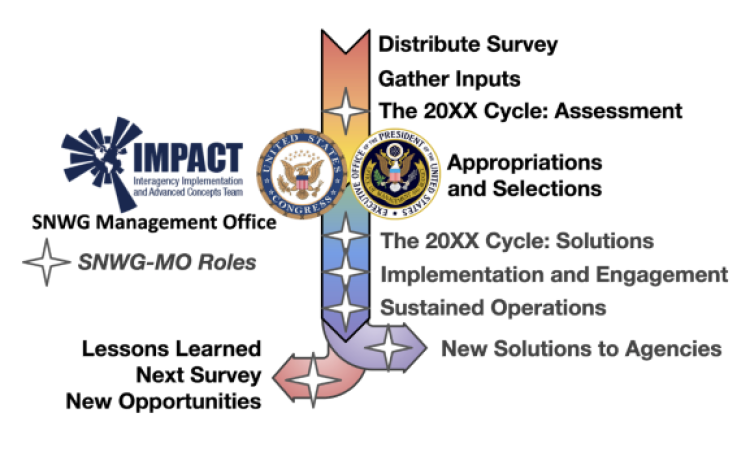A Satellite Needs Working Group (SNWG) Management Office (MO)
Federal agency participation in the Satellite Needs Working Group (SNWG) survey is on the rise with a record 125 submitted surveys in the 2024 cycle. NASA has established an SNWG Management Office (MO) at NASA Marshall Space Flight Center to manage the process of assessing agency needs for satellite Earth observations, and importantly, the implementation and operations of solutions developed by NASA to meet those needs. The SNWG Management Office is an integral part of NASA’s response to the needs of other federal agencies through its SNWG Stakeholder Engagement Program (SEP).
The SNWG MO's primary objectives are to:
Facilitate the assessment of SNWG agency needs
Oversee the co-design, implementation, and operations of SNWG solutions
